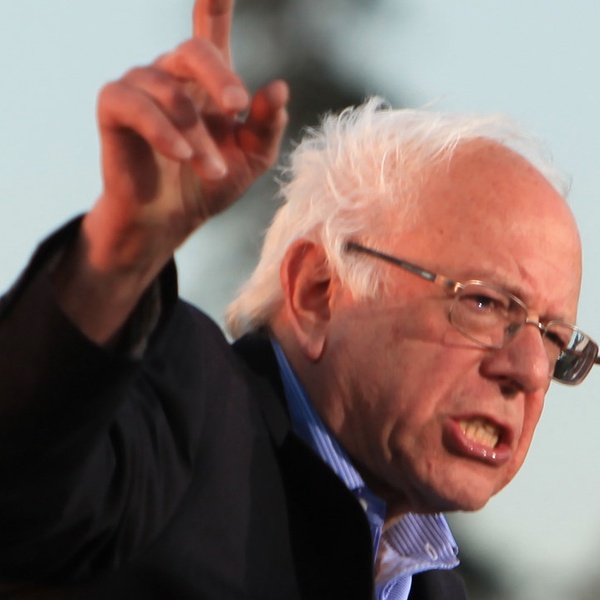By Ruth Payne
There was a moment in mid-February when Senator and Democratic Presidential candidate Bernie Sanders began to do something out of character: win. For just 21 short days, it seemed as if Sanders would be the Democratic challenger to President Donald Trump.
Democrats across the country began to seriously consider the consequences of a Trump v. Sanders race when Sanders gained momentum after the New Hampshire and Nevada primaries were called in his favor. However, with Democrats stating electability as paramount to their candidate choice, many seemed willing to do anything to stop Sanders from becoming the Democratic nominee and risk losing the election to Trump.
Although Sanders had pulled ahead in the earliest primaries, many voters and party leaders were skeptical. He has a dedicated following among progressives, but the label “Democrat” barely defines Sanders. He is certainly not supported by the party establishment due to his history as a lone-wolf Independent with little action in his years as a representative and senator. His platform called for hard-working middle class Americans to take back power from the corporate elite, deploying the “us versus them” narrative that has dominated recent political campaigns, including Trump’s 2016 election campaign. In 2016, Trump blamed the liberal coastal elite for the problems of the middle class, while Mr. Sanders’s campaign condemned the greedy corporate elite for crippling the middle class. Both outsider candidates used populist rhetoric to their advantage, with Trump appealing to a conservative audience and Sanders to a liberal one.
This, along with a distrust of the establishment, helped both Sanders and Trump earn support in the 2016 election. Thus far, the 2020 campaign has followed the same trends. Both the Trump and Sanders campaigns are designed to fight the establishment from the outside as they challenge their main establishment rival, former Vice President Joe Biden.
As Biden began to win primaries on Super Tuesday, other Democratic candidates started to fold and the field shrank rapidly. Moderates like Sen. Amy Klobuchar and Mayor Pete Buttigieg dropped out of the race and endorsed Biden the morning after his victory. Voters who supported other candidates made ideological compromises, with the field of the 2020 Democratic primary narrowing from more than 20 candidates to only those deemed electable. And though she endorsed Sanders in October, even Representative Alexandria Occasio-Cortez and other progressives began to distance themselves from him. After Sanders’s losses on Super Tuesday, she advised him to drop out of the race, saying that the election was “more important than all of us.”
As a friend of Mr. Sanders said when asked about Sanders’ possible exit, “the base is attached to the movement and Bernie, not operatives.” Sanders’ dedicated following of progressive voters may have actually been his weakness in this election. He needed to expand his base from what it was at the end of the 2016 election to gain more power, but his brash calls for huge government aid programs and projects, such as Healthcare for All and free college tuition, still seemed untested to moderate Democrats.
Without his party’s support, Sanders quickly becomes overwhelmed by his own polarizing stances. As the establishment Democrats saw it, he could not compete against an incumbent with a call to American dominance, many dedicated followers, and full party support. 58 percent of Democratic voters said they preferred a candidate that could beat Trump to someone who agreed with them on the issues — and 62 percent of the ‘beat Trump’ voters went for Biden, according to a Michigan exit poll. As quickly as Sanders is able to gain momentum in the early primaries, he stumbles after moderate Democrats strengthen their resolve against him. For many centrists, Sanders was just too great a risk.
Undeniably, this has demonstrated that one factor matters to Democrats above all else: electability. Though electability is subjective, it responds to the patterns of the group. Until Biden proved himself on Super Tuesday, the Sanders campaign still had hope. Sanders’ hallmarks became his downfall, as niche support and a progressive message made many moderate Democrats doubtful. Biden’s singular dominance in states with black and moderate voters, such as South Carolina, sealed Sanders’ fate.
If someone a year ago asked who the candidates in the 2020 Presidential election would be, the answer might be obvious: Biden would win the nomination with Sanders finishing a strong runner-up. Though the outcome is not incorrect, it does not even begin to tell the whole story. Biden did not actually win the nomination. He became the candidate of last resort, a safe compromise of ideals. Broadly speaking, only Mr. Sanders’ famously staunch supporters didn’t follow the crowd and vote for Biden instead of their ideal candidate on Super Tuesday. Consequently, the results of Super Tuesday were much less of a win for Biden than a loss for everyone else.
When Sanders suspended his campaign on April 8, many of his supporters expressed their anger at the prospect of voting for Biden. Though part of their response may have been from disappointment at not being able to further the progressive platform beyond where it was in 2016, another part seemed to be frustrated at having no other choice but Biden. After Sanders’ endorsement of Biden on April 14, Sanders’ former press secretary Briahna Joy Gray announced that she would never vote for Biden, reflecting the sentiment of many of his supporters. With #TimesUpBiden trending on Twitter and the Democratic National Committee deemed corrupt by far-left media, some bitter Sanders supporters have urged others to write in his name on the ballot or abstain rather than vote for Biden. Confronted with the same decision other Democrats faced before their preferred candidate dropped out, Sanders supporters now have to decide what to prioritize: ideology or practicality.
